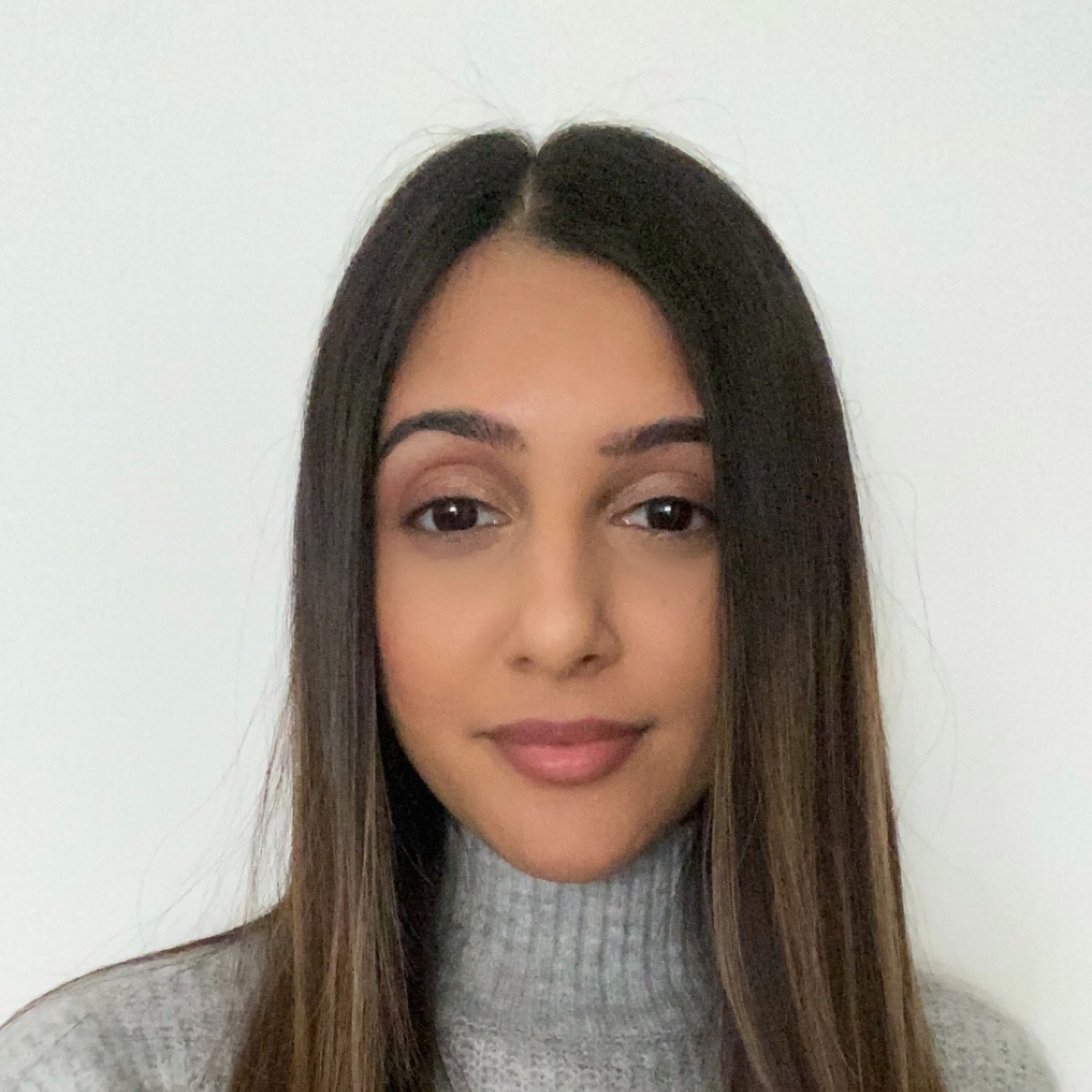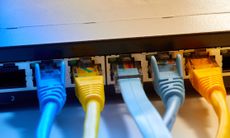Tumble dryer vs dehumidifier – which one is cheaper for drying clothes?
Drying your clothes is trickier in the winter so we’ve looked at a couple of alternatives to the washing line, a dehumidifier and tumble dryer - to find out which one is cheaper


A British winter is not the best time for drying clothes outside or in our homes, a tumble dryer or dehumidifier can help – but which is cheaper?
Energy bills have already skyrocketed and have households searching for ways to cut energy costs, and the bad news is energy costs are set to rise again from April 2023.
So it’s a good idea to make an effort to save energy where you can.
We found out whether it is cheaper to use a dehumidifier or tumble dryer.
Tumble dryer vs dehumidifier – we run the tests
How much does it cost to run a dehumidifier?

When it comes to how much does a dehumidifier cost to run, our sister site Goodto.com crunched the numbers and found it costs around 8.5p an hour to run a typical 250W dehumidifier.
According to ChooseDehumidifier, how long you leave a dehumidifier on depends on the humidity levels in the room, the temperature and the amount of moisture in the room.
So, if you were to leave it on for an average of 12 hours per day it would cost you £1.02 per day and £20.40 per month. This is under the assumption that you run it five times a week.
Look After My Bills Newsletter
Get the best money-saving tips, tricks and deals sent straight to your inbox every week. Make sense of your money in partnership with The Money Edit.
These calculations are based on the current Kwh price of 0.34p. If you own a smart meter, that will give you a good indication of how much energy is being used when your dehumidifier is on too.
But it will take longer for clothes to dry compared to a tumble dryer and you’ll need space to hang your clothes out indoors in a room with a dehumidifier.
There are two types of dehumidifiers: refrigerant and desiccant.
Refrigerant dehumidifier - Commonly used in warm conditions, in heated homes. It doesn’t work as well in cooler temperatures.
Desiccant dehumidifier - Works well in cooler conditions like in a conservatory, and it absorbs water from the air.
So if you’re drying clothes in your home, a refrigerant dehumidifier is your best bet.
The main reason households usually invest in a dehumidifier is to reduce dampness and moisture in the air, which is very common when drying wet clothes indoors.
Damp and moisture cause mould and removal of mould can cost a house hundreds of pounds – not to mention the bad health effects on the respiratory system, according to mould prevention technology, Wolviic.
CEO of Wolviic, Jigna Varu said: “Indoor air quality is already known to be ten times worse than outdoors, and drying clothes inside is only going to make it the perfect conditions for mould to grow.”
... You can dry your clothes with the dehumidifier. It has the added benefit of when you're not drying clothes, it keeps the house humidity down which helps you heat your house more efficiently. Yes, it uses electricity, but if you get an energy efficient model then not much...August 27, 2022
Some dehumidifiers come with an energy efficiency setting which means once it’s reached its desired level, it will switch off by itself. For example, this ElectriQ dehumidifier from AppliancesDirect has a timer feature and a smart mode which maintains the best humidity level.
Dehumidifiers are pricey as the ElectriQ dehumidifier costs £129.98 and they aren’t a permanent solution for mould growth says Jigna, but “dehumidifiers can reduce the risk of mould and can act as a short-term solution,” she adds.
Experts told our sister site Ideal Home how to use a dehumidifier properly and effectively:
- Dehumidifier manufacturer Chris Michael told Ideal Home that people should opt for a compressor dehumidifier and clean the filter monthly with a fibre cloth, so it doesn’t get clogged up.
- He also recommends doing your research before buying. Things to look out for are a timer setting for drying clothes which turns off after 6 hours, and checking how much energy it uses (the wattage) so you’re aware of its running costs.
- The dehumidifier should be placed at least 20cm away from the wall and away from drafty doors or windows so the dehumidifier runs efficiently, brand manager from Duux, Chloe King says.
- If you open the window to try to get rid of moisture, this will only work if it is colder outside than it is inside, in temperature.
- Product manager at Russel Hobbs, Marc Duckworth told Ideal Home that the placing of the dehumidifier is the most common mistake. It needs to be placed nearest to the damp area/ nearest to where the damp is coming from. So if it’s drying clothes, then place it nearby.
- To dry clothes quickly, you should position the dehumidifier so that the air that comes out of the machine moves the clothes, rather than the other way around where the filters face the clothes.
How much does it cost to run a tumble dryer?

In line with the current 0.34p kWh, based on an 8kg load it costs around £91.80 and £198.90 to run. But it really depends on the model of the tumble dryer, how powerful it is, the energy rating and its weight.
You can find out more about how much it costs to run a tumble dryer with the three specific types: Heat pump, condenser and vented.
The great thing about tumble dryers is that they are marked with an energy efficiency rating, A being the most efficient and G being the least. This also helps factor the cost of buying one.
If you don’t already have a tumble dryer, investing in one can be expensive. For example this Bosch tumble dryer from Argos costs £729 so it’s on the higher end of the market, but it is A++ rated so it’s worthwhile for the energy saving.
But you can drop a level in energy rating and opt for a more affordable choice like this B rated BEKO tumble dryer from Currys. It costs £249, £480 less than the A++ rated one and it still has a relatively good energy rating.
As a tumble dryer comes under kitchen appliances, you can cut the costs of running one. Some energy providers are paying their customers to run appliances at off peak hours, so you could cut costs by running the tumble dryer overnight.
Other small factors like running full loads only, cleaning the lint filter and untangling garments can also cut tumble dryer running costs.
Energy Saving tip for your tumble dryer 💡Make sure your filters and vents are always kept clean. A blocked filter is not just a fire hazard, but will also make your clothes take longer to dry. Keep it clean!#EnergySavingTip pic.twitter.com/uDVVEhbavGSeptember 1, 2022
The verdict
If - like most households - your budget is tight, investing in a dehumidifier is a good option to consider as it is cheaper to buy and run than a tumble dryer.
Make sure you do your research when purchasing one and take note of the tips on the most efficient way to use a dehumidifier.
But it won’t dry clothes as quickly and you’ll need the space to hang your clothes out in a room indoors.
Not only that, it comes with a lot more benefits when it comes to indoor air quality and saving you money on mould removal.
If you do end up using a dehumidifier in the long term then don’t forget about mould, as it only acts as a short-term remedy.
And if you’re a household that already has a tumble dryer then don’t wash that money away by not using it, as there are ways to cut costs with eco modes and energy-saving features.
Related articles
- Slow cooker vs oven - which is cheaper?
- Heated airer vs dehumidifier - which is the cheapest way to dry clothes indoors?
- Heated airer vs tumble dryer - which is cheaper to dry laundry?
- Premium Bonds vs The National Lottery - which is more likely to make you a millionaire?
- Air fryer vs microwave- which one is cheaper to run?
- How to lower your boilers flow temperature and save £112 on your bills
- Is it cheaper to leave your heating on all day?
- Will putting cling film on the window lower my energy bills?
- Dangerous ways you shouldn't heat your home

Vaishali graduated in journalism from Leeds University. She has gained experience writing local stories around Leeds and Leicester, which includes writing for a university publication and Leicester Mercury.
She has also done some marketing and copywriting for businesses.
When she is not writing about personal finance, Vaishali likes to travel and she's a foodie.
-
 Three energy firms pay £8m in switching compensation - has your provider paid out?
Three energy firms pay £8m in switching compensation - has your provider paid out?More than 100,000 customers have received compensation after changing providers, but is now a good time to switch energy suppliers?
By Tom Higgins Published
-
 Save £300 on your supermarket shop with cashback accounts
Save £300 on your supermarket shop with cashback accountsBanks, credit card companies and cashback sites are all offering cashback on your supermarket shop, but can you use them all to max out your savings?
By Vaishali Varu Published
-
 Three energy firms pay £8m in switching compensation - has your provider paid out?
Three energy firms pay £8m in switching compensation - has your provider paid out?More than 100,000 customers have received compensation after changing providers, but is now a good time to switch energy suppliers?
By Tom Higgins Published
-
 HMRC tax credit renewal packs: act quickly to avoid losing benefit payments
HMRC tax credit renewal packs: act quickly to avoid losing benefit paymentsHouseholds receiving tax credits will be asked to confirm their details to ensure they continue to receive their entitlement. Here’s everything you need to know to make sure you don’t miss out on up to £3,480 a year
By Tom Higgins Published
-
 Mobile provider rewards: how to earn up to £700
Mobile provider rewards: how to earn up to £700Your phone could be the key to unlocking hundreds of pounds worth of discounts and freebies that you don’t even know about. We reveal which mobile providers offer the best rewards
By Vaishali Varu Published
-
 How much do cooking appliances cost to run?
How much do cooking appliances cost to run?Energy-saving cooking tips from the Energy Saving Trust
By Katie Binns Published
-
 Virgin Media leaves thousands without broadband: are customers entitled to compensation?
Virgin Media leaves thousands without broadband: are customers entitled to compensation?Tens of thousands of Virgin Media customers were hit by broadband outages yesterday. We explain your rights if your broadband goes down
By Katie Binns Published
-
 Broadband switching service delayed - how it will eventually work and why it’s crucial to switch
Broadband switching service delayed - how it will eventually work and why it’s crucial to switchA broadband switching service designed to make it easier to change to a cheaper or faster deal has been delayed. We explain how you can still avoid huge increases to your monthly internet bill
By Katie Binns Published
-
 Heat pumps: why you can claim a £5,000 government grant for longer
Heat pumps: why you can claim a £5,000 government grant for longerWhy you now have more time to apply for a government grant towards getting a heat pump in your home
By Sue Hayward Published
-
 British Gas cuts energy bills by £15 for prepayment meter customers from April
British Gas cuts energy bills by £15 for prepayment meter customers from AprilOne million British Gas customers on energy prepayment meters will save around £15 as British Gas cuts its penalty three months early
By Sue Hayward Published